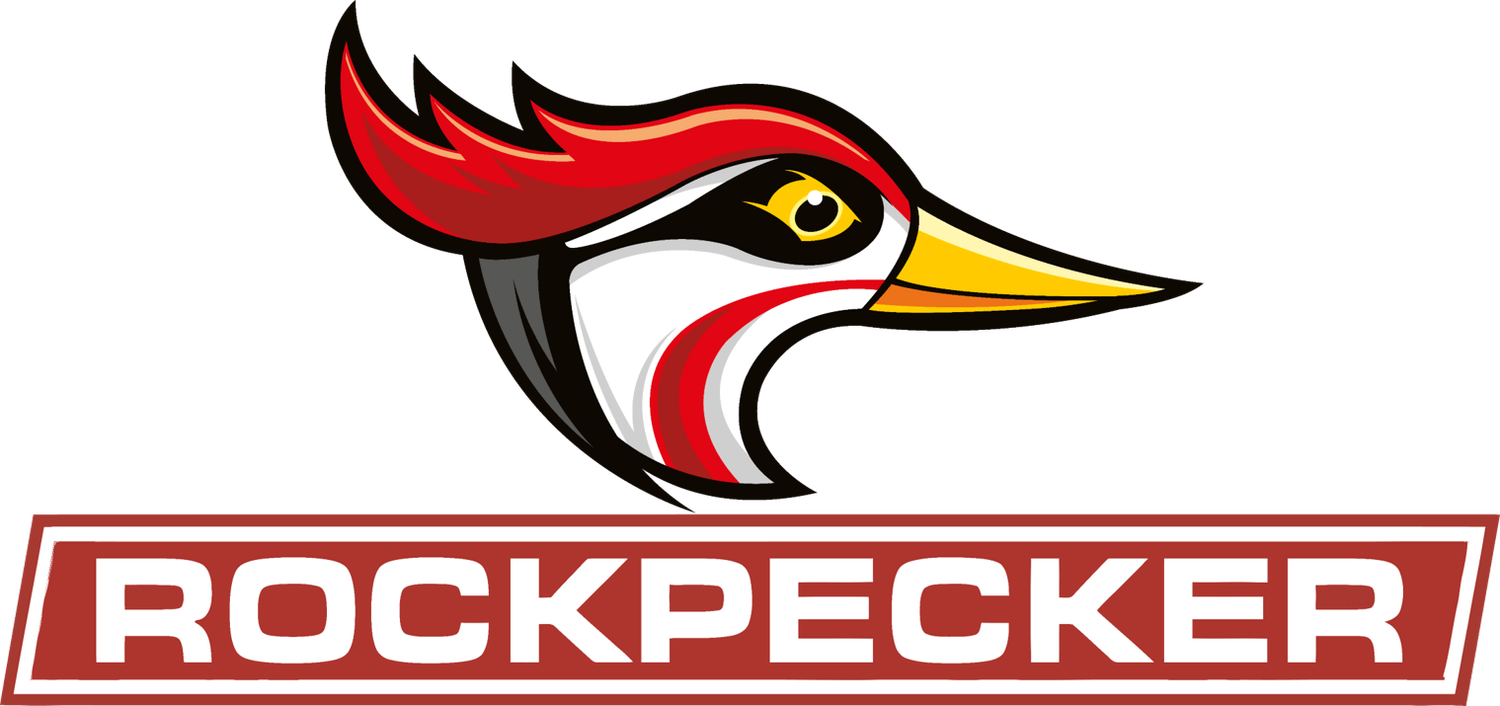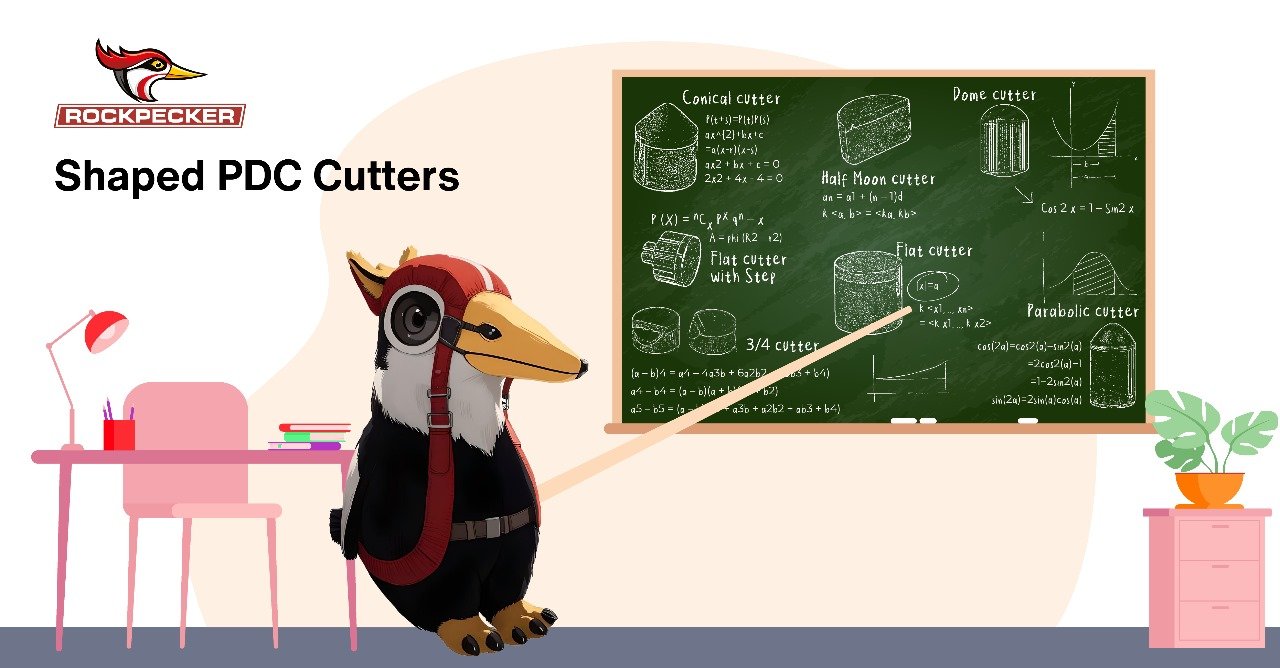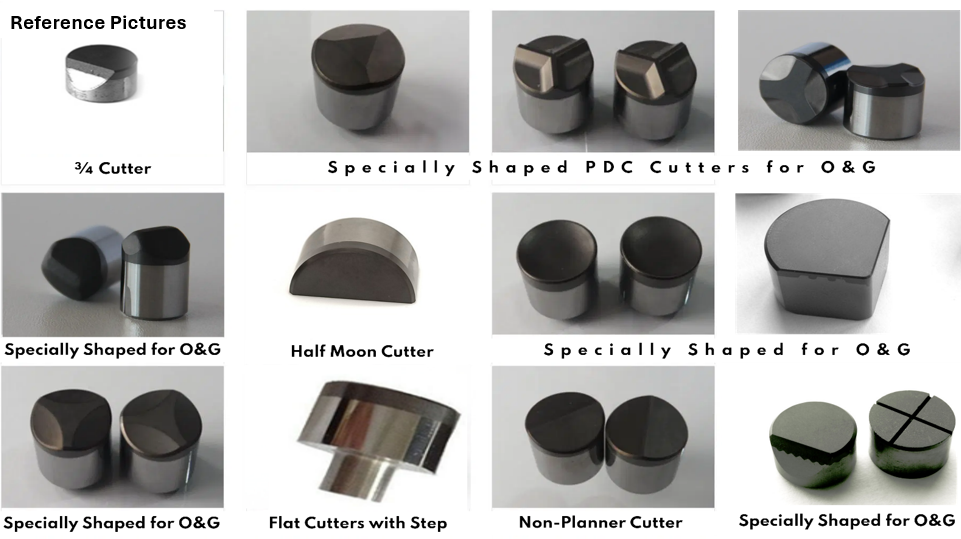Exploring the Different Shapes of PDC Cutters in Drilling
/In the heart of every successful drilling operation lies a hidden gem, a crucial component that transforms raw power into precision—the PDC cutter. As seasoned drillers navigate the depths, their expertise converges with the intricate geometry of these cutters, unlocking new realms of efficiency and accuracy. Let's journey through the diverse shapes and designs of PDC cutters, illuminating the artistry and functionality that define the drilling industry's cutting edge.
Introduction to PDC Cutters:
The cornerstone of contemporary drilling technology is the Polycrystalline Diamond Compact (PDC) cutter, which combines the endurance of engineering skill with the hardness of diamonds. These expertly made cutters have different geometries that are suited to different drilling requirements, improving performance in a range of formations and circumstances.
A PDC bit is made up of several Polycrystalline Diamond (PCD) cutters that are mounted to the bit body. The shearing action that occurs between the cutters and the rock surface allows the bit to cut through rocks efficiently. In drilling operations, the PDC cutter is a workhorse and an essential part of a drill bit. PDC cutters come in a variety of forms to accommodate different work environments. Making the right form choice is essential since it can save drilling costs and increase operating efficiency considerably.
Figure 1: Exploring the Different Shapes of PDC Cutters in Drilling
Usually, we divide the PDC cutter as below:
1. PDC flat cutters: PDC flat cutters are mainly used for drilling bits in mining and oil drilling fields. It also can be used in diamond core bit and PDC bearing. Offer high wear and impact resistance. Small cutters (8mm, 10mm, 13mm, 16mm) drill at higher penetration rates (ROP) in certain applications like limestone but may produce smaller cuttings. Large cutters (19mm-25mm) are more aggressive but may increase torque fluctuations and produce larger cuttings It also can be used in diamond core bits and PDC bearings that have subtypes: a. PDC Radial Bearing b. PDC Thrust Bearing
They provide high wear resistance, longer life (4-10 times longer than traditional bearings) and can operate at high temperatures (up to 233°C). Low friction loss in the bearing assembly enhances mechanical power transmission.
Figure 2: PDC Flat Cutter structure and further types.
Figure 3: Structure of different Flat PDC cutters.
Figure 4: Rockpecker uses high-quality Flat PDC cutters.
2. PDC buttons: PDC buttons offer over 10 times improved abrasive resistance compared to tungsten carbide buttons. PDC buttons come in different shapes:
- Domed: Domed buttons are used for DTH drill bits.
- Conical: Conical buttons for cone bits.
- Parabolic: Parabolic buttons for auxiliary cutting.
Illustrated Diagram of all the popular PDC Cutter Components and Assembly:
Figure 5: Geometry of PDC Cutters
This table provides a comparison of the shapes, sizes of the main body, cutting edge (for cutters), and bearing surface (for bearings) for different types of PDC cutters.
Figure 6: PDC Cutters Structural Specifications
This table provides a Comparative Analysis of Cutters' Characteristics, Installation Methods, and Advantages:
Figure 7: Comparative Analysis of Cutters: Characteristics, Installation Methods, and Advantages
Main Advantages for PDC cutters:
- High density (low porosity)
- High compositional & structural homogeneity
- High wear and impact resistance
- High thermal stability
- The best overall performance available in the Market.
Figure 8: Irregular PDC Cutter Shapes (3D PDC Cutters)
The oil and gas drilling landscape is witnessing a notable shift towards the adoption of 3D PDC cutters, driven by the escalating challenges in drilling operations and the continuous evolution of drilling efficiency.
In addition to the conventional cylindrical PDC cutter, a diverse array of cutter shapes has emerged in response to the dynamic demands of the drilling industry. The realm of 3D PDC cutters is expanding across all sectors of drilling, offering a spectrum of benefits. These include heightened rates of penetration (ROP), improved cooling mechanisms, enhanced depth of cut, increased engagement with formations, and superior secondary cutting capabilities. This versatility in shape allows us to cater to a myriad of needs and applications within the drilling realm.
Practical Insights from the Field: Experienced drillers understand the significance of choosing the right PDC cutter geometry for each drilling scenario. It's not merely about shape; it's about synergy—the harmonious alignment of cutter design with geological challenges, rig capabilities, and operational goals.
Imagine navigating through challenging formations, where each turn of the bit is a calculated dance between power and finesse. The right PDC cutter geometry becomes the conductor of this symphony, orchestrating precise cuts, efficient material removal, and minimal wear and tear.
Closing Thoughts:
In the ever-evolving landscape of drilling technology, the diversity of PDC cutter geometries continues to push boundaries and redefine possibilities. As drillers and manufacturers alike embrace innovation and craftsmanship, the legacy of precision-driven drilling journeys forward, propelled by the artistry and functionality of differently shaped PDC cutters.










